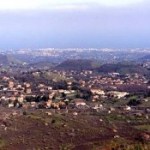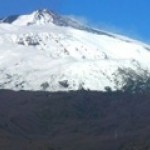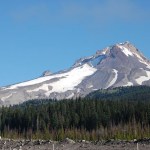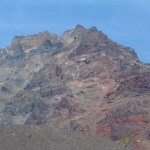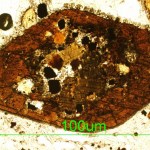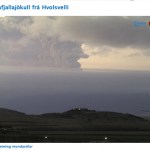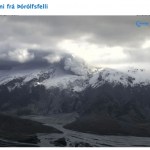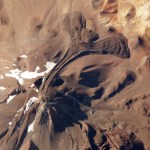lava flows
The final part of Etna Week, brought to us by guest blogger Dr. Boris Behncke. Check out Part 1 and Part 2 as well!
Etna Volcanic hazards
By guest blogger Dr. Boris Behncke.
Etna is one of the most active volcanoes on Earth, and a population of nearly one million people dwell on its flanks, many in areas that have been repeatedly invaded by lava flows during the historical period. A few villages have been constructed very close to the vents of eruptions only a few hundred years old.
Top: Residential areas surrounding numerous pyroclastic cones on the lower southeast flank of Etna, seen…
Etna Week Part 1
Mount Etna - Brief Anatomy of an Exceptional Volcano
By guest blogger Dr. Boris Behncke.
Italy truly deserves to be called "the Cradle of Volcanology" - not only because it hosts virtually all existing types of volcanoes and volcanic rock compositions, and seven of its volcanoes have had confirmed eruptions during the historical period (i.e. the past approximately 2700 years), but also because the earliest surviving eyewitness account of an eruption was written in Italy, the first volcano observatory and the first geothermal power plant were built in Italy, and three…
Mt. Hood in Oregon, taken August 2008. Image by Erik Klemetti. Click on the image to see a larger version.
Quick news!
I'm not going to go into too much depth right now about the recent study published in Nature Geoscience on Mt. Hood in Oregon - I plan to talk about it more in a few weeks. Why is that? Well, the lead investigator on the study, Dr. Adam Kent of Oregon State University, is a friend of mine (and occasional Eruptions commenter) so I plan to get the details from him before posting. I was also peripherally associated with some of this work - mostly in the field acting as a pack…
Lots of little pieces of news I've run across ... time to play a little catch up.
Stromboli: A volcano after Don Ho's heart.
Every once in a while, my RSS feeds will dredge up some articles from years gone by ... and this week there were two New York Times pieces that are a few years old, but interesting nevertheless. The first is about research conducted by Dr. Robert Sohn at WHOI on explosive undersea eruptions. The second is work by Corr and Vaughan about finding subglacial volcanism in Antarctica. Both are interesting reads if you missed them (like I did) the first time around.…
Lava flows from Kilauea in Hawai`i move towards a home in Kalapana.
Whenever I think about the hazards posed by most lava flows, I tend to think about the opening scene in the Hitchhiker's Guide to the Galaxy. Developers are planning to knock our hero Arthur Dent's house down and as a last ditch effort to stop its destruction, Arthur lies down in front of the bulldozer. The demolition supervisor, a certain Mr. Prosser, at one point asks Arthur if he knows how much damage the bulldozer might suffer if he just lets it roll over poor Mr. Dent. Arthur says he doesn't know and Mr. Prosser replies…
The northern Chilean and southern Peruvian Andes are full of volcanoes that look stunning - I mean, jaw-dropping details of volcanism litter the landscape. The reason for this is two fold: (1) there is an awful lot of volcanism in the northern Chilean/southern Peruvian Andes (as known as the Central Volcanic Zone) - and has been that way for over 10 million years and (2) it has also been very, very dry in the area (most of which is known as the Altiplano-Puna Plateau) for at least a few millions years as well - it is the home of the Atacama Desert! So, this means you get lots of volcanic…
Tourists hiking next to an active lava flow on Pacaya in Guatemala in 2006.
I'm flying back to Ohio today after a successful few weeks of fieldwork/paper writing. Apparently I have a pile of tomatoes waiting in our garden in Granville ... !
On to news:
To go with the news that lava flows from Kilauea creep ever closer to structures in Kalapana, the NASA Earth Observatory posts its first volcano image in a bit. The shot shows the steam-and-gas plume from the Halema`uma`u Crater in Kilauea's summit caldera. You can also see some video of the lava flows near Kalapana as they move along the…
Kilauea lavas on the move near Kalapana. Image taken July 17, courtesy of the Hawaiian Volcano Observatory.
Some news over the last few days:
The lava flows from Kilauea are moving with a vengeance right now, damaging roads and heading for some structures. The lava flows near Kalapana have moved almost 200 meters since Sunday, closing within 100 yards of homes in the area. The lava is moving to the east along Highway 130 and 137 - and tourists are making it difficult to get around as they park to watch the lava - upwards of 2,000 people! A number of people (and dogs) have had to be…
So, I've had requests on the blog to help to do some defining of volcanologic terms on the blog, so I thought I'd try a new column called Eruptions Word of the Day. I'm not sure how often it will run, but let's give it a try.
Eruptions Word of the Day for July 5, 2010: Dacite
Dacite is a magma type defined by silica (SiO2) content between 63-68 (or 69) weight percent. That is the textbook definition, but some other typical characteristics of dacite lavas (or magmas) is the presence of certain minerals: plagioclase feldspar and hydrous minerals (containing water in their mineral structure)…
The latest update from the Smithsonian/USGS Global Volcanism Program!
Highlights (not including Taal, Eyjafjallajökull and Bezymianny) include:
Another thermal anomaly was spotted on an Kuril Island volcano - this one being Tiatia. The volcano has no seismic monitoring network, so the thermal anomaly is all that has been observed.
Lava flows and strombolian explosions continue at Guatemala's Pacaya. Some of the explosions have launched bombs hundreds of meters into the air.
Kliuchevskoi was another busy Russian volcano, with a large thermal anomaly and ash explosions that produced a plume…
Looking for some volcano news - you've found it.
A shot of volcano "tourists" near the erupting Pacaya. Photo by the Associated Press.
Eruptions reader Dr. Boris Behncke dropped a note that Kilauea has not one but two active lava lakes right now. The lava lakes can be seen on the webcams for the Halema`uma`u Crater and the Pu`u O`o flank vent. The latest status update from June 6th by the USGS Hawaiian Volcano Observatory talks about both the summit and rift activity (video) on Kilauea as well. Meanwhile, Hawaii 24/7 has a piece in the Volcano Watch series about whether residents of Maui…
The NASA Earth Observatory has been dazzling us with images from the Eyjafjallajökull eruption for months - but they have been dazzling us with volcanoes images for years! Here are two more images for those of you who love seeing volcanoes from above:
Cleveland, Alaska
As I mentioned earlier this week, Cleveland volcano likely had a small eruption over the weekend producing a small ash cloud. Cleveland is already known as an extremely picturesque volcano, both from the ground for its highly conical shape - a textbook andesitic stratocone - and from space. This new June 1 image is from almost…
For all of you going into withdrawal now that Eyjafjallajökull seems to have quieted down, there are two eruptions of note that aren't in the North Atlantic:
Undated image of the Barujari cone at Mt. Rinjani in Indonesia.
Arenal in Costa Rica - which is almost always sputtering away - had a more significant explosive and effusive event today. The volcano produced enough ash, bombs and gas emissions - along with 8 lava flows (or avalanches, depending on the source) - to prompt the evacuation of the National Park around the volcano. Arenal has had numerous strombolian eruptions over the last…
Grading grading grading!
A webcam capture of the eruptive plume from Eyjafjallajökull on the morning of May 6, 2010.
News:
A quick update on the Eyjafjallajökull eruption: The volcano has been producing an impressive ash plume over the last day (see image above). The current ash plume is reaching 5.8-6 km height (19-20,000 ft) - and causing some trouble over Ireland and Scotland. However, much of airspace closed yesterday has reopened (for now). You can see two new images of the ash plume over at the NASA Earth Observatory. As for the continued fallout from the ash plume from April,…
The steam plume from a lava flow moving down the slopes of Eyjafjallajökull on May 2, 2010.
A quick note on the activity at Eyjafjallajökull in Iceland: The ash from the ongoing eruption has caused a partial closure of airspace over Ireland from 0600 to 1200 on Tuesday May 4. This is one of the first closures of European airspace since airspace reopened over 10 days ago. This closure is based on the predicted location of ash in flight corridors over Ireland tomorrow.
The Icelandic Met Office has released two interesting updates on the activity at Eyjafjallajökull. The first describes the…
Webcam capture of Eyjafjallajökull erupting on May 2, 2010. You can see the steam plume on the middle flanks of the volcano - this is likely a lava flow coming from the summit vents.
A brief update on activity at Eyjafjallajökull:
Overnight, the lava flows from Eyjafjallajökull could be seen in the crater of the ice cap - some of the images posted by Eruptions readers are simply stunning. You can clearly see the red glow of the strombolian eruptions at the vent, and the glow of the lava flows as they had down the slope of the volcano. This has brought a lot of new melting to the snow/…
Lots to do!
Tourists flock to the Eyjafjallajökull-Fimmvörduháls in Iceland.
The media does love the term "supervolcano", and a number of Eruptions readers sent me a link to the article on the dreaded submarine "supervolcanoes". I would delve into this article from Live Science, but it sadly again does a dreadful job with a lot of this - remember, "supervolcano" is a made-up word by the BBC with no strict definition, so trying to say there are a dozen supervolcanoes worldwide is just silly. And why does it take multiple paragraphs and multiple mentions of "scientists" before they get a…
The eruption at Eyjafjallajökull-Fimmvörduháls continues on - the explosive spatter and bomb eruptions at the new central vent (on the second fissure) were impressive all night, making the hikers/cars/aircraft look like mites in comparison. This eruption has, so far, followed the pattern of Hawaiian-style volcanism quite well, so I thought it could be a good time to talk about what exactly Hawaiian-style volcanism is. There is a sequence of events that leads up to and follows the start of an Hawaiian-style eruption - although this sequence can stop at any point along the way - but it is…
Actually, no the volcanoes aren't from space, but pictures of the volcanoes were taken from space. The NASA Earth Observatory has posted three more gems of volcanic activity taken by one of the fleet of earth imagers in orbit:
A recent image of Chaiten taken by EO-1. Image courtesy of the NASA Earth Observatory.
There is a great image of the busy Kamchatkan Peninsula, where four volcanoes are seen erupting in a single image - Kliuchevskoi, Bezymianny, Shiveluch and Karymsky. The plume from Karymsky is especially prominent as a grey streak above the white snow of the Russian winter (albeit…
As a volcanologist, I am partial to impressive lava flows, especially in volcanoes that erupt material that you'd think wouldn't produce big flows. For example, there are quite a few volcanoes in the Chilean Andes that erupt dacite lavas, which are relatively viscous (sticky), so you might expect it to erupt explosively. However, you can get large dacitic to rhyolitic lava flows, quite commonly, and these large flows are called coulées (a "volcanic dome flow").
Lllullaillaco volcano on the Chile/Argentina border. Note the very prominent coulée with flow levees. Click on the image to see a…
